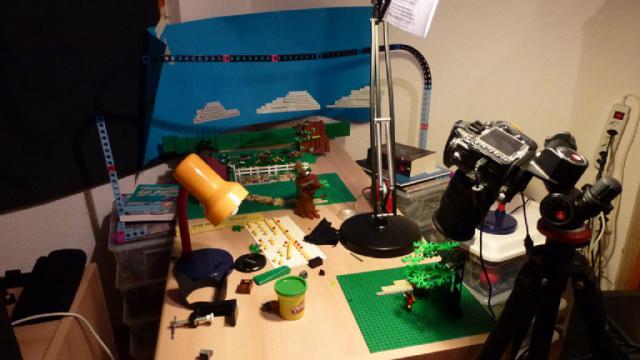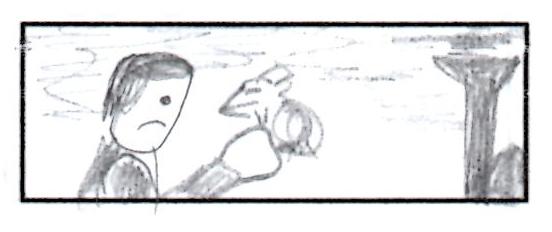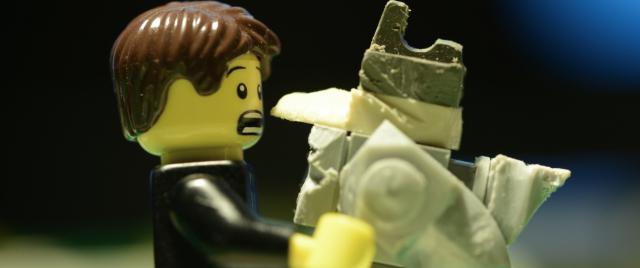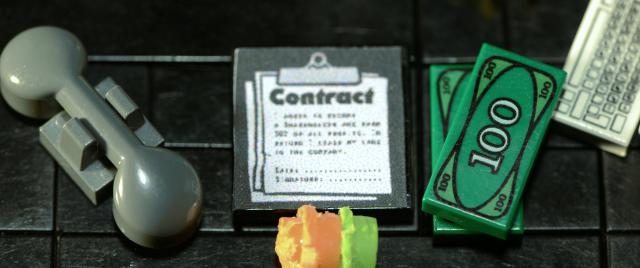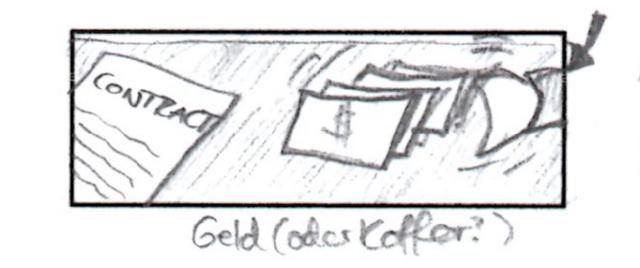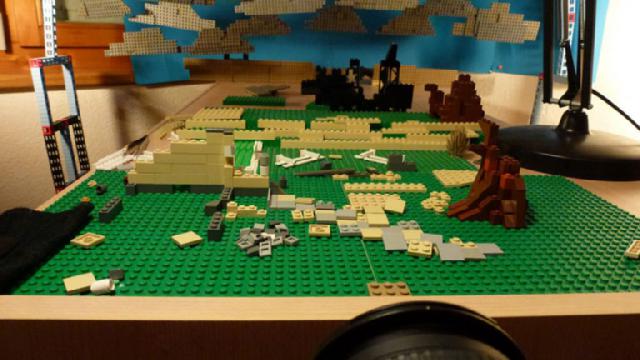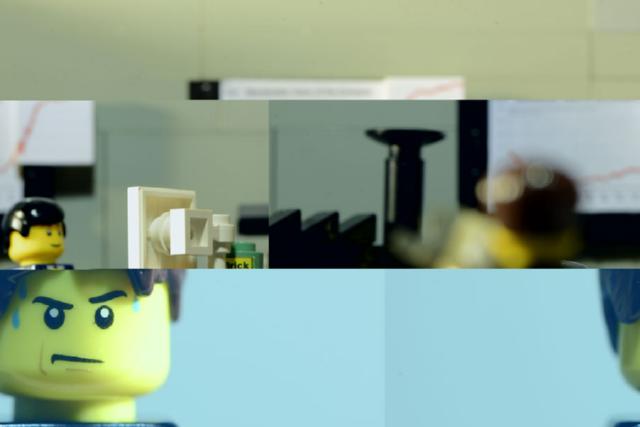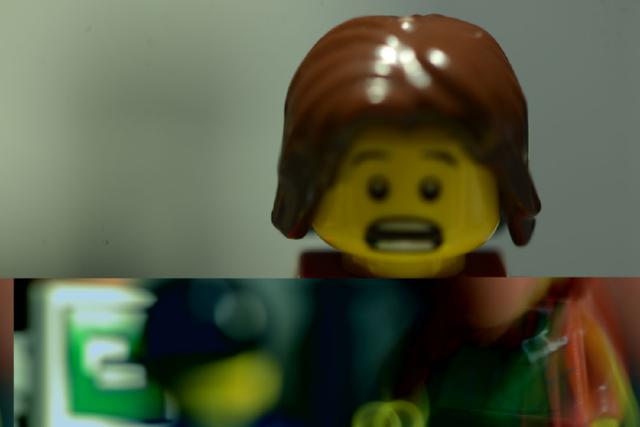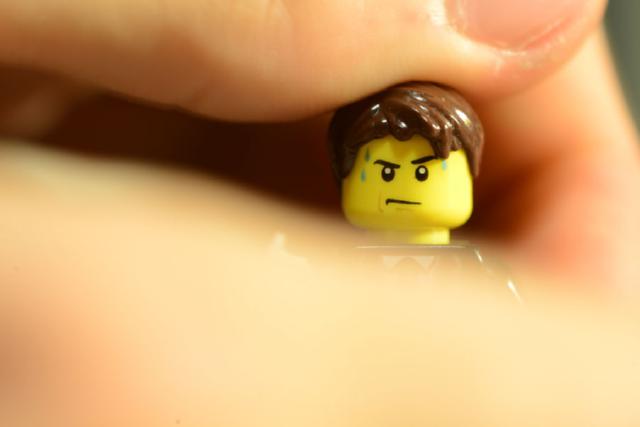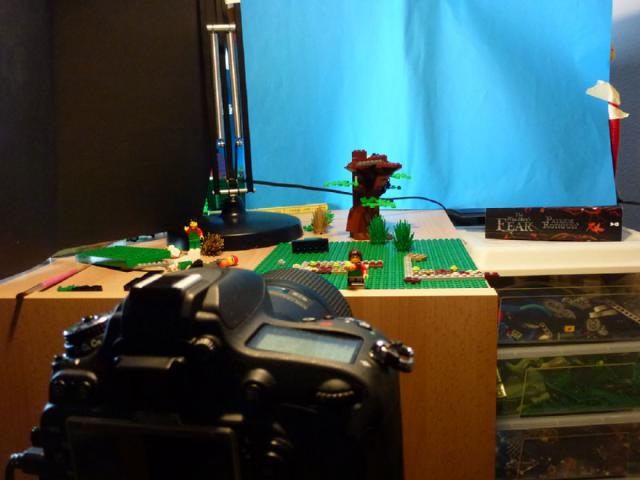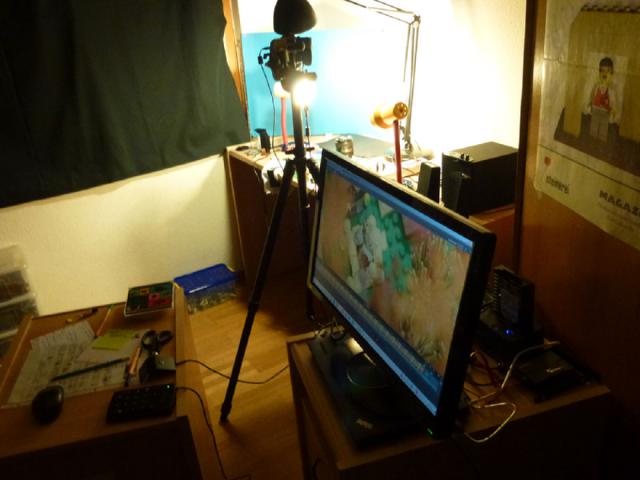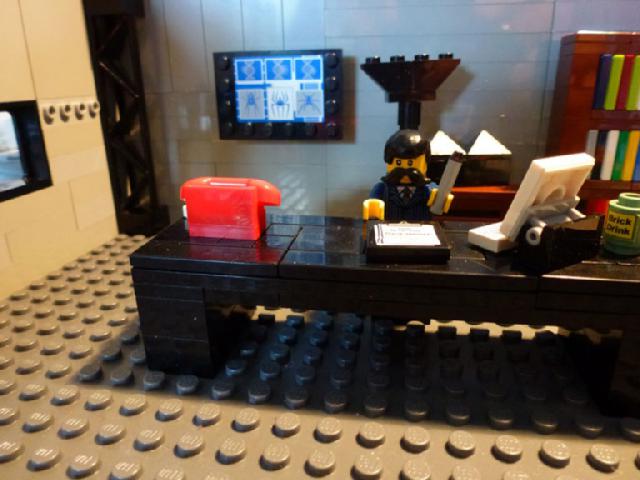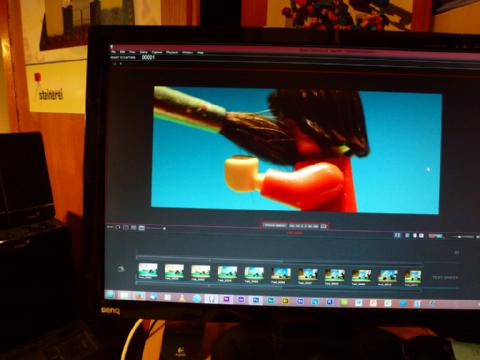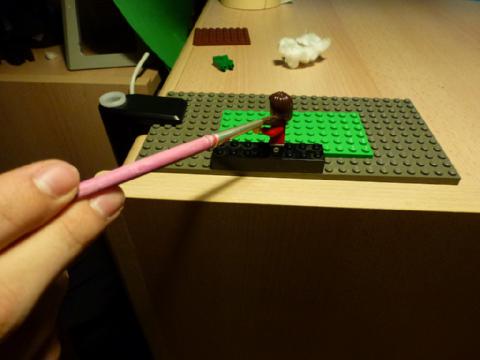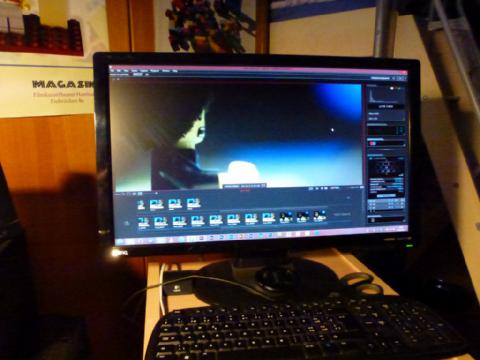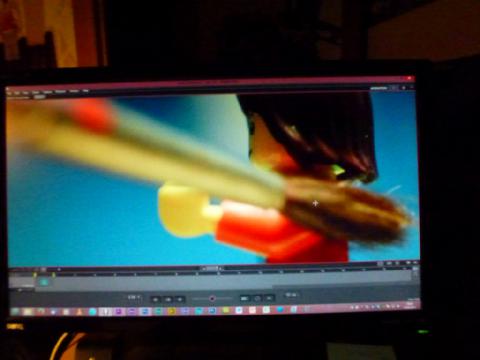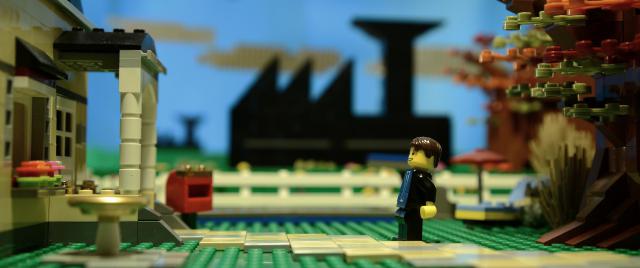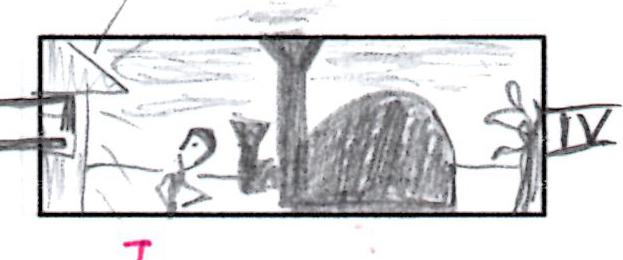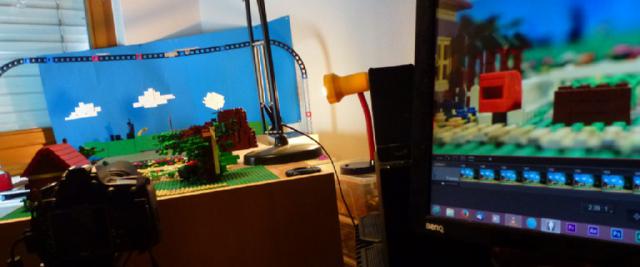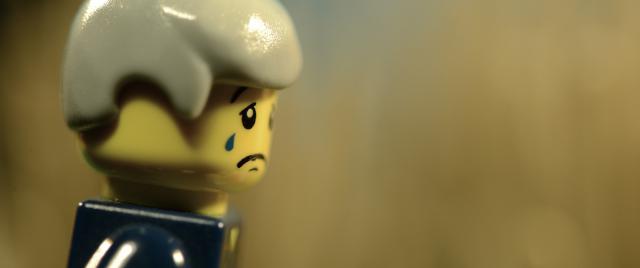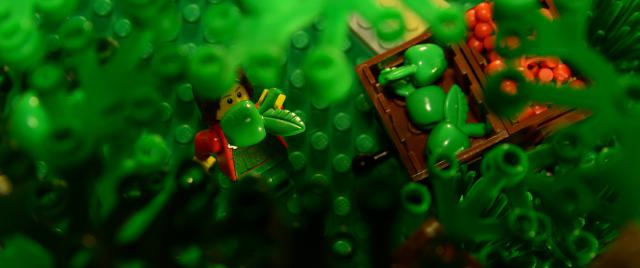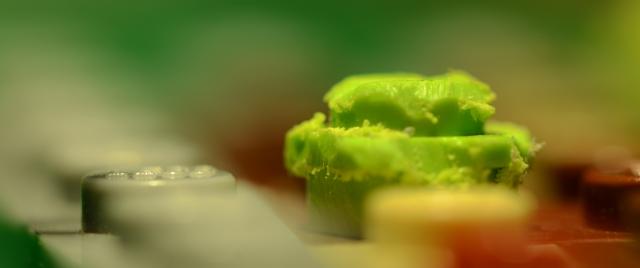
The Deal
(2017)
Details
• Length: 8:20
• Year: 2017
• Production time: 3+ years
• Camera: Nikon D600
• Lens: Nikkor 105mm f/2.8 (macro lens), Nikkor 24-85mm f/3.5-4.5G
• Programs: Dragonframe, Adobe Creative Suite 6
• Awarded i.a. Best Script, Best Direction and Best Set Design at BaB's 2017 Brickstars
• Length: 8:20
• Year: 2017
• Production time: 3+ years
• Camera: Nikon D600
• Lens: Nikkor 105mm f/2.8 (macro lens), Nikkor 24-85mm f/3.5-4.5G
• Programs: Dragonframe, Adobe Creative Suite 6
• Awarded i.a. Best Script, Best Direction and Best Set Design at BaB's 2017 Brickstars
Behind the Scenes
Masking Aperture Flickering
We spent a good amount of time trying to figure out why exactly our shots had a weird flickering. As it turned out in the end this was due to the camera resetting the position of the lens blades after every frame. In other words if you shoot with f/16 or so, the blades close accordingly and then open up again after the frame has been taken. This procedure is of course subject to physical inaccuracy the smaller you choose the aperture. It’s generally no problem at maximum aperture which is why we only had this problem in shots with a smaller aperture. Since we had already shot too much footage and only about every 4th or 5th frame was subject to this flickering we decided to mask it. The trick is rather simple, although it can be extremely time-consuming:
The camera mustn’t move for this in order to work, because you have to take an image of the background only, without the moving object. Then you trace a mask (in a program like Gimp) around the outline of the moving object, feather/blur the edges of that mask and erase the inner pixels. This image then gets exported and imported into your editor, stretched over the whole scene. The current output should now be a stable background with the flickering happening inside the previously drawn mask. For the outliners you now have to adjust individually brightness and contrast (maybe experiment also with curves) in order to match the background. You can get even more precise if you key frame the mask, though this implies that you need to readjust it every frame. You will probably still notice a little bit of a change in blurriness/sharpness, which is a side effect of the varying lens aperture, but ideally this is only slightly noticeable.
Trivia
• This film was initially designed for the Steinerei 2014 (! – yes, we exceeded the deadline just a bit) with the topic “time”. After various ideas we agreed that our main goal was to implement the topic into our narrative structure, i.e. to work with different time “jumps”. This, however, was a pretty good challenge all around. First, it took us pretty long to figure out how we wanted to do it in an organic way and come up with a storyboard. Then we had to create a main set (which would be the one furthest in the past) and adjust it, as the movie’s time moved on. The consequence was a pretty limited order shooting-wise, because we had to keep things in one time consistent. The set design had to mirror the passing of time, while still ensuring the viewer would not get lost.
• We quickly realized that our idea would take longer to finish than the Steinerei’s deadline allowed us to. So we decided to take the time necessary to achieve a good result. This meant, amongst other things, that we stopped shooting for a few months. These months turned quickly into a year, but in April 2015 we were determined to continue our mammoth project. Everything went well until an unprecedented, unexpected and unwanted event took place: Our main hard drive, containing ALL our footage, crashed during a shooting session.
First thoughts: All is lost, our computer does not want us to finish this project and we have to abandon it…
...fortunately, these first thoughts were quickly followed by the search for a recovery program, allowing us to restore the footage. This search, after long and nerve-wracking tries, ended with the program “Recuva”. At first, we were only able to restore a few images, some damaged beyond repair. Fortunately, the more we got to know the tools of the program, the more were we able to extract from the broken hard disc. Finally, we got around 95% of the images back in a usable way. It is no understatement that this was probably the happiest day in this movie’s long production time!
• Unfortunately we had not much time in the following years, which is why it took us two more to complete our new film. We suddenly had a lot of second thoughts concerning the ending: Should we leave it at death and desolation? Or rather end on a happier, more hopeful note? We tried various endings between these two extremes before arriving at the current final result.
• Filming with a macro lens brought us not only better image quality and more possibilities to play with depth of field but also: Dust! Everywhere! We ended up cleaning (or rather trying to clean) our protagonists in every shot with a brush, not always successful.
• The clouds are all entirely made of lego bricks and were not added or coloured during post-production, we made different versions of them and hung them up during the shots.
• It was our first time working with a very deep set (around 1.5 meters) in order to create the depth live and not to use masking in the editing process.
• Yes, we had to... "process" some of the bricks, in order to make them look sick. It is surprising what an effect you can achieve with a knife and a few different rasps. This works especially well with lego, since even a few cuts or bruises break the otherwise perfect smoothness and symmetery the pieces usually have. But don't worry; we only "processed" the pieces actually visible in the film (6 round 1x1 plates & 2 birds & 1 stick), no more pieces were damaged - honestly!
• You can actually see a small miniature of the factory in the factory boss’ office. He seems to be quite fond of our softdrink "Brick Drink"...
• The chart in the factory boss’ office is the world gold rate from 1971 – 1999.
Copyright © silentframes.com
All rights reserved. Impressum 2007 - 2023
This website does neither collect data nor use cookies.
All rights reserved. Impressum 2007 - 2023
This website does neither collect data nor use cookies.

